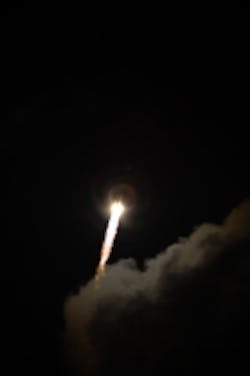Gaia Telescope and its billion-pixel digital camera lift off
European Space Agency’s (ESA) Gaia, which will capture images of more than one billion stars to create the most detailed 3D map of the Milky Way galaxy ever created, blasted off on the morning of December 18 from Kourou, French Guiana.
Gaia’s mission to create a 3D map of the Milky Way galaxy will provided detailed physical properties of each star observed, characterizing their luminosity, effective temperature, gravity, and elemental composition. The stellar census will provide observational data to address a variety of important questions related to the origin, structure, and revolutionary history of the galaxy, according to the ESA.
Equipped with two mirror telescopes that act as “eyes” and provide stereoscopic vision, Gaia will be able to capture 3D Images. The image sensors, provided by e2v—which will have more than a billion pixels—will record images captured by the telescopes. The camera’s sensor measures one and a quarter square feet and is made up from 106 light sensitive electronic chips, according to The Telegraph.
With its imaging components, Gaia will be able to see more than 150,000 light years into space. In addition, the telescope is so powerful and sensitive that it could measure a person’s thumbnail from the moon or detect the width of a human hair from 620 miles away, according to CNN.
Gaia is also expected to discover tens of thousands of supernovas by comparing its repeated scans of the sky. It is also expected, as a result of slight periodic wobbles in the positions of some stars, to reveal the presence of planets in orbit around them. Lastly, it will also likely uncover new asteroids in the solar system and refine the orbits of those already known, according to the ESA.
View the ESA press release.
Also check out:
Five machine vision applications to keep an eye on in 2014
Largest camera in the world to create 3D map of Milky Way
Panoramic image of Mars shows planet from human eye perspective
Share your vision-related news by contacting James Carroll, Senior Web Editor, Vision Systems Design
To receive news like this in your inbox, click here.
Join our LinkedIn group | Like us on Facebook | Follow us on Twitter | Check us out on Google +
About the Author

James Carroll
Former VSD Editor James Carroll joined the team 2013. Carroll covered machine vision and imaging from numerous angles, including application stories, industry news, market updates, and new products. In addition to writing and editing articles, Carroll managed the Innovators Awards program and webcasts.
